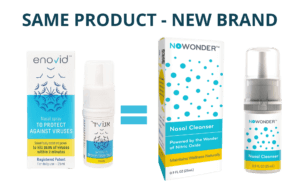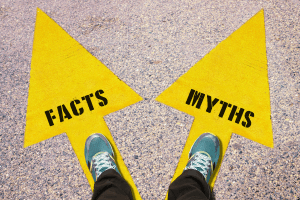Since our new product Zoomind hit the shelves, we’ve received a surge in interest from people looking for a comparable product to replace the reliable and popular dietary supplement for ADHD called Vayarin that’s no longer available. Zoomind is not just a Vayarin replacement but also brings some important extra benefits thanks to the inclusion of essential compounds like l-tyrosine and phosphatidylserine that play a vital role in promoting brain health.
Here’s a short history of the rise and fall of Vayarin and how our new formula compares with its effects.

About Vayarin dietary supplement for ADHD.
Until its closure in 2018, Enzymotec manufactured a very effective dietary supplement for treating children affected by Attention-deficit/Hyperactivity Disorder (ADHD) called Vayarin. Our pharmacy and web outlets were at the forefront of bringing this great solution to families worldwide struggling to find alternatives to the usual medications, especially when they found that Vayarin brought them real relief without the risk of adverse side effects.
Vayarin disappeared from the market for several years. Now, thanks to the work of my pharmaceutical team and our manufacturing associates, we have brought back a dietary supplement for ADHD with a very similar formulation to Vayarin, with updated ingredients that make it even more effective than Vayarin. One thing remains the same: Zoomind is a nutrient-rich, safe dietary supplement formulated to promote clarity and focus in children and adults.
How did Vayarin work to alleviate the symptoms of ADHD?
Vayarin was formulated to correct dietary imbalances that are associated with ADHD. With only minor differences in how it is made, Zoomind delivers the same benefits as Vayarin.
One of the most likely causes of ADHD, especially in children, is a chemical imbalance in the brain’s neurotransmitters. These molecules are the messengers that help carry signals throughout the nervous system, both inside the brain and the rest of the body. The most important of these are dopamine and norepinephrine. They must be manufactured in the body from dietary input and can’t be taken directly as supplements or drugs.
To produce enough dopamine, a person must consume foods rich in omega-3 polyunsaturated fatty acids (PUFAs). It’s hard to get enough of the right PUFAs in a standard diet because the foods that provide them are both expensive (fresh fish like salmon, tuna, sardines) and challenging to build into a young person’s daily diet. Unless a growing child eats at least two meals a week with some of these fish as the main ingredient, there is likely to be a deficit in PUFAs. As a consequence, neurotransmitter levels will be below optimal.
Vayarin was designed specifically to deliver phosphatidylserine supplemented with omega-3-rich eicosapentaenoic acid (EPA), which was most beneficial in treating children with ADHD. For many years, our customers used Vayarin with great success to help alleviate the symptoms of ADHD both on its own and along with the more commonly prescribed stimulant medications when necessary.
The withdrawal of Vayarin from the market left a significant gap, and we have made every effort to bring an even better product to replace it. Zoomind is designed to do everything Vayarin did, with a few added benefits from what we learned through further research and study.
The full formula of Zoomind’s active ingredients is:
- L-tyrosine: 250 mg
- Phosphatidylserine: 75 mg
- Omega-3: 5 mg
What do Vayarin and Zoomind dietary supplement for ADHD have in common?
The website RxList lists the active ingredient of Vayarin as 75 mg phosphatidylserine (PS) conjugated to omega-3 fatty acids enriched with eicosapentaenoic acid (EPA). These same basic ingredients that were in Vayarin are now also in Zoomind.
What does Zoomind have that is different from Vayarin?
The main difference is in the addition of 250 mg of L-tyrosine. We explain more about the benefits of this biochemical below.
What do the common ingredients in Zoomind and Vayarin do?
In the case of phosphatidylserine, two clinical trials of children with ADHD (published in The British Dietetic Association and the Journal of the European Association of Psychiatrists) reached similar conclusions that “phosphatidylserine (PS) significantly improved ADHD symptoms and short-term auditory memory in children. PS supplementation might be a safe and natural nutritional strategy for improving mental performance in young children suffering from ADHD.”
In the case of omega-3 PUFAs, they supply the raw ingredients for producing neurotransmitters such as dopamine and norepinephrine. Dopamine is critical because it generates a sense of pleasure and plays a critical role in learning. When engaging in something pleasant, the brain releases dopamine, making the person want to repeat the behavior. Dopamine is one of the “feel-good” neurotransmitters because it is heavily involved in reward and motivation. Lower dopamine levels can result in attention deficits, like those seen in ADHD.
Norepinephrine is involved in attention, alertness, and arousal. It’s part of the “fight-or-flight” response, which prepares the body for action in response to perceived threats or challenges. Impulsivity and hyperactivity are typical symptoms that come from imbalances in norepinephrine.
Food enriched with omega-3 fatty acids such as eicosapentaenoic acid (EPA) and docosahexaenoic acid (DHA) supplies the right mix of biochemicals to boost the output of the vital neurotransmitters.
What benefit does L-tyrosine add to Zoomind?
Based on our and other scientists’ research, we added L-tyrosine to the basic Vayarin formula. L-tyrosine is an amino acid precursor to dopamine, norepinephrine, and epinephrine, the neurotransmitters involved in attention and mood regulation. A precursor is a chemical that acts as a stepping-stone in producing more complex molecules. Without L-tyrosine, the production of dopamine and the other neurotransmitters is slow, and output is lower.
You can watch leading neuroscientist Dr. Andrew Huberman on his YouTube channel explaining more about L-tyrosine.
Most frequent questions.
How Do I Buy Zoomind?
You can buy Zoomind online without a prescription. Zoomind is delivered in capsule form. It has minimal known side effects or drug interactions. You can easily add to the daily diet of a child with ADHD.
What can improve the lives of people with ADHD?
Simple dietary supplement for ADHD like Zoomind with high levels of omega-3 PUFAs, especially eicosapentaenoic acid (EPA) and docosahexaenoic acid, as well as dopamine precursors and phosphatidylserine, are known to be most beneficial for ADHD in children.
Always consult qualified healthcare providers and your friendly pharmacist for the best action.
How is Zoomind taken?
Zoominds’s capsules can be swallowed whole with liquid or opened and sprinkled on food such as peanut butter, applesauce, yogurt, or in a shake. It can also be mixed into a cold beverage.
What is the recommended dose for Zoomind dietary supplement for ADHD?
The recommended dose of Zoomind dietary supplement for ADHD is two capsules daily with food. If the daily dose has been missed, it can be made up for the next day (up to a maximum of four capsules in one day). Always consult your doctor before taking Zoomind, especially if you (or your child) take other prescription medication.








